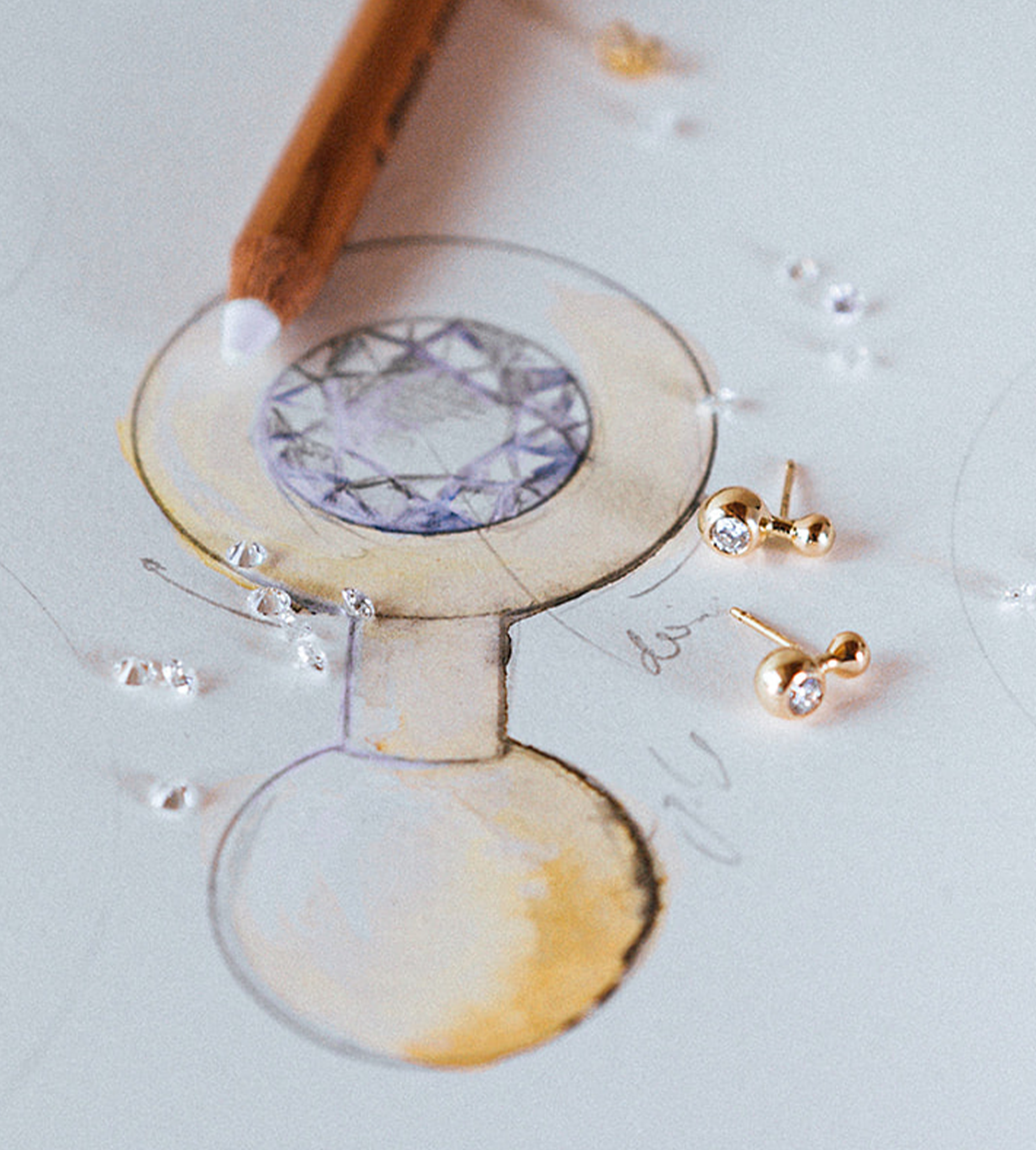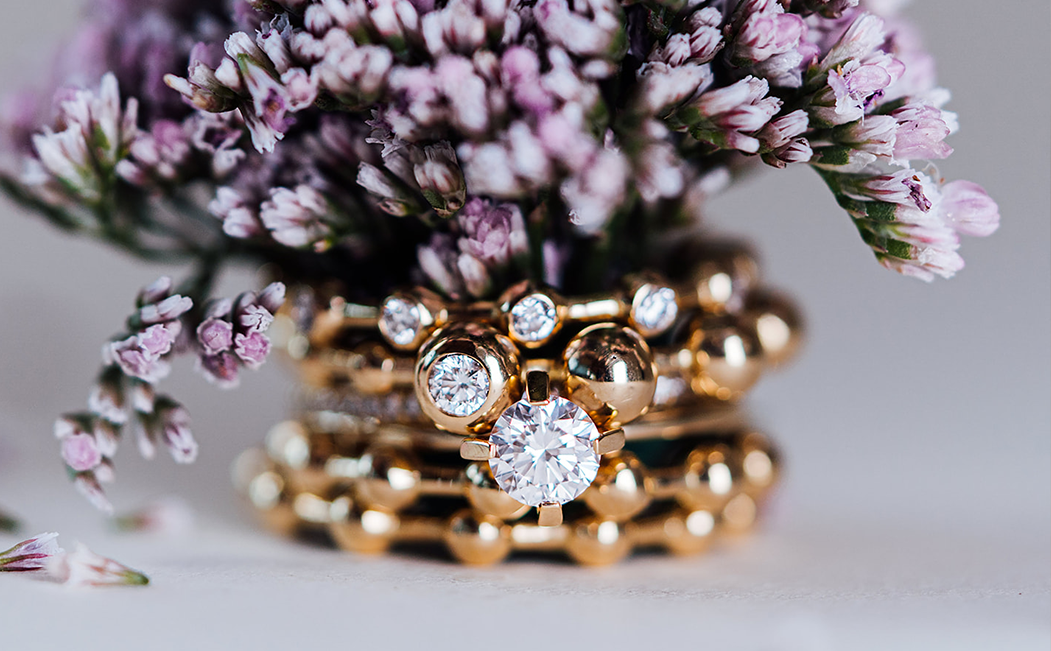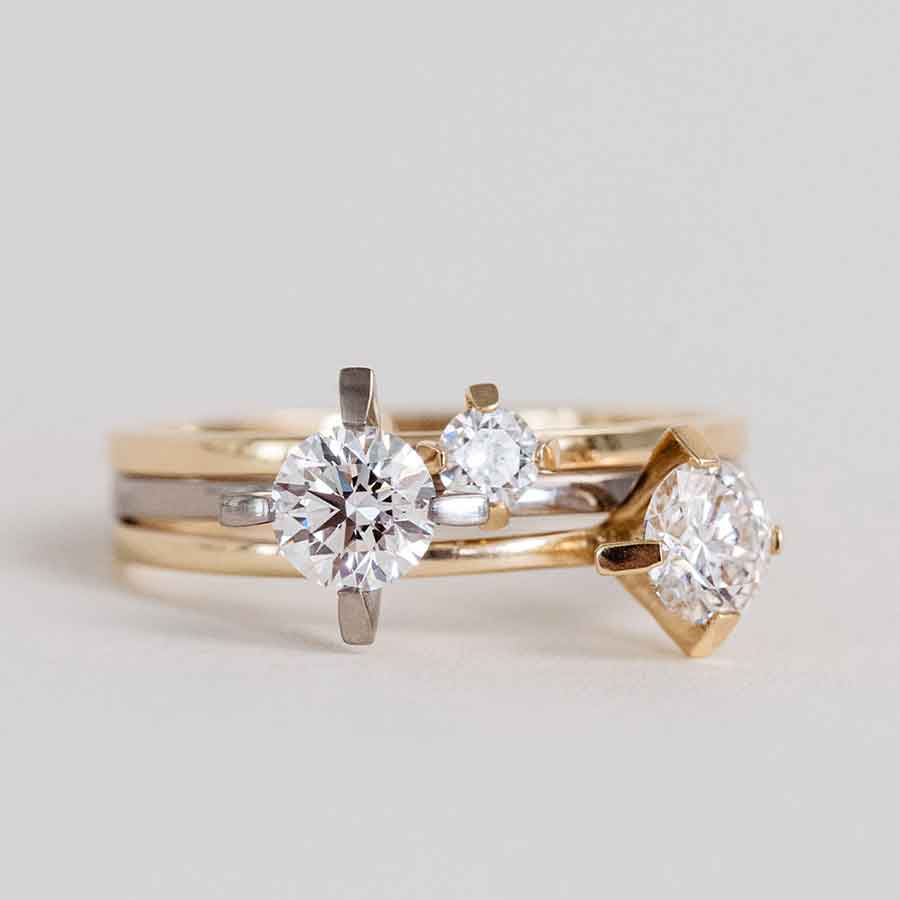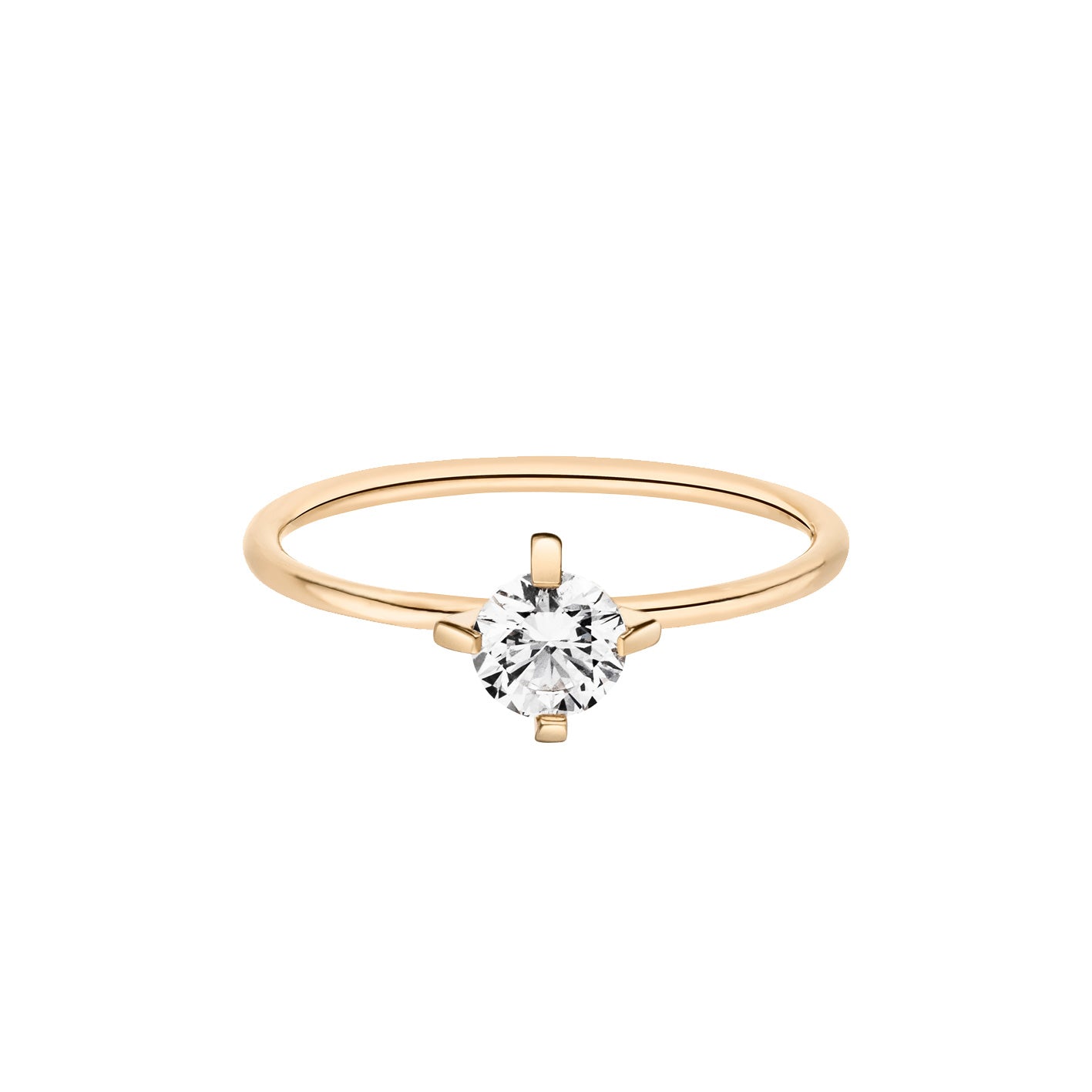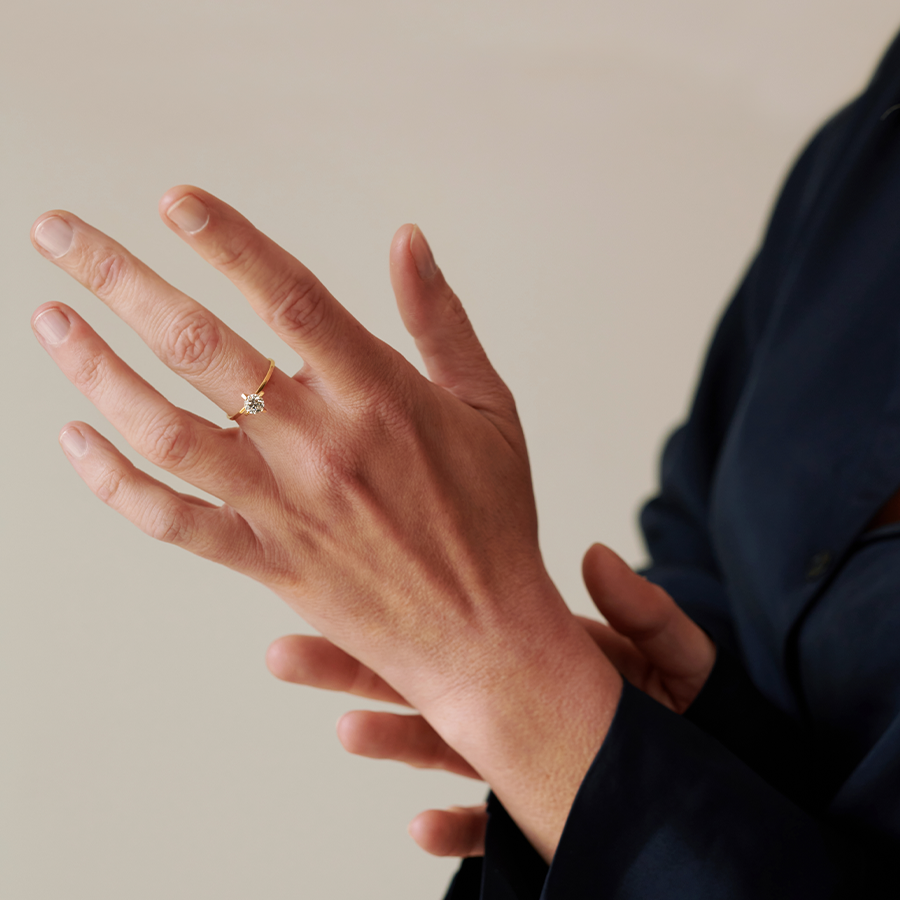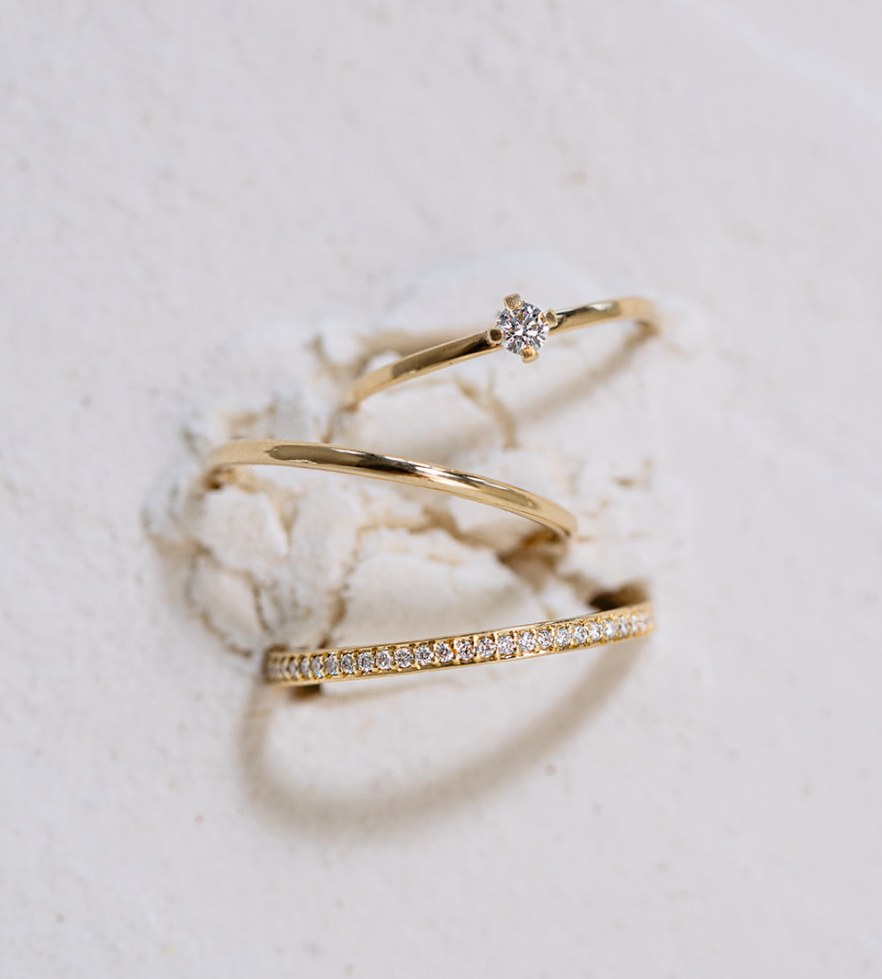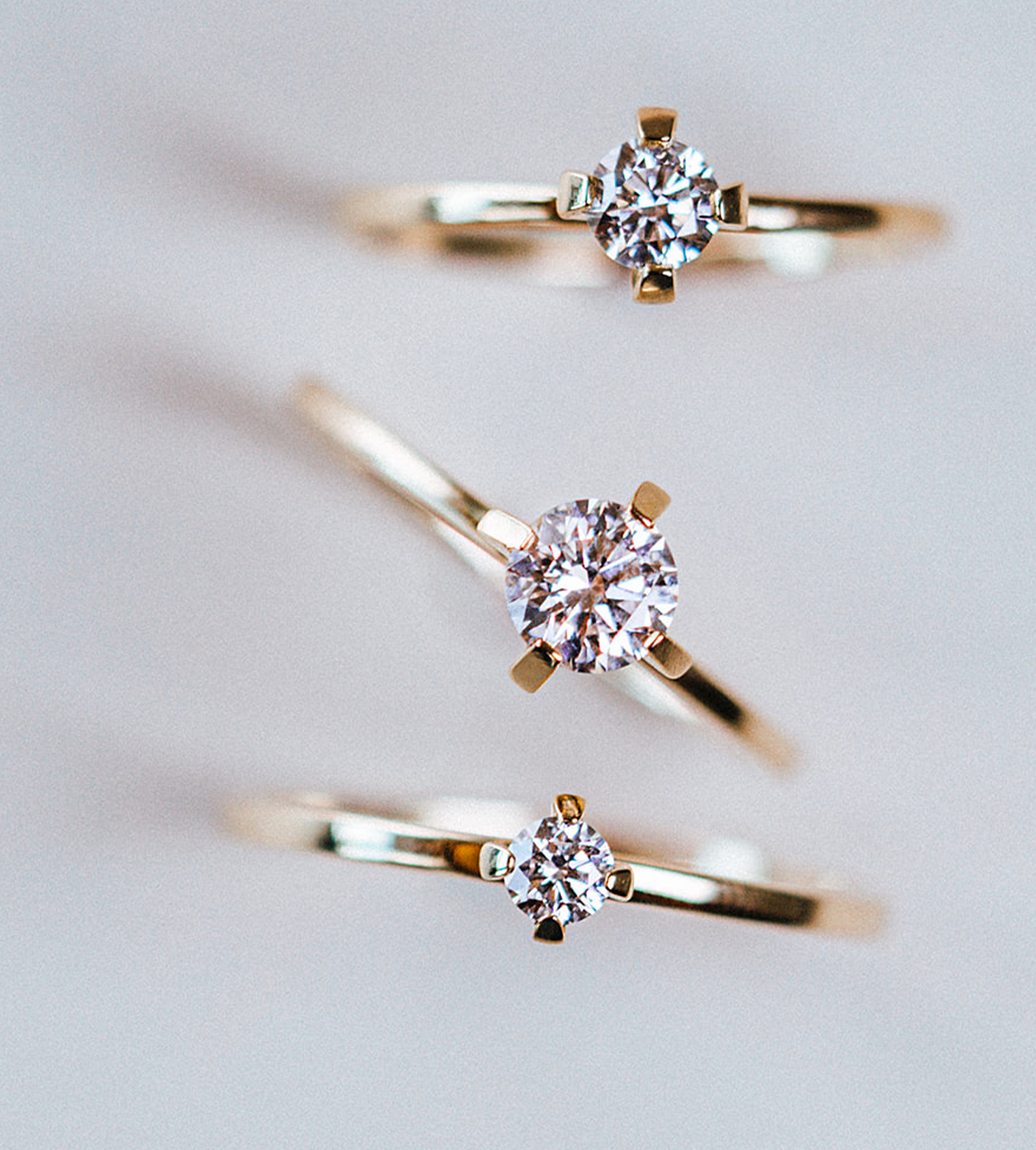Diamond cut is crucial as it greatly affects a diamond's beauty and value. In a nutshell: the quality of the sparkle depends solely on its cut. While a well-cut diamond can reflect a lot of light and thus ensure a sparkling play of colors and maximum luminosity, a poorly cut diamond does not reflect the light optimally, despite the high color quality and high degree of purity, and therefore appears dull and less lively.g.
When grading diamonds (with a brilliant cut), a distinction is made between five internationally recognized cut grades: excellent, very good, good, fair and poor. gelhaft).
The following factors largely determine the cut quality:
The precision: The relationship has to be right. The angles and size of the facets must match the rest of the diamond.
The symmetry: The alignment and intersection of the individual facets must be precisely worked out.
The polish: All facet shapes must be placed in harmony with each other and be neatly detailed. In addition, the diamond should have a clean outer finish.
With the help of these quality features, the cut can also influence the supposed size of a diamond. A well-cut diamond can make it appear larger than it actually is, while a poor cut can do the opposite. This means that a carefully cut diamond not only has more brilliance, but also looks and is more valuable.
